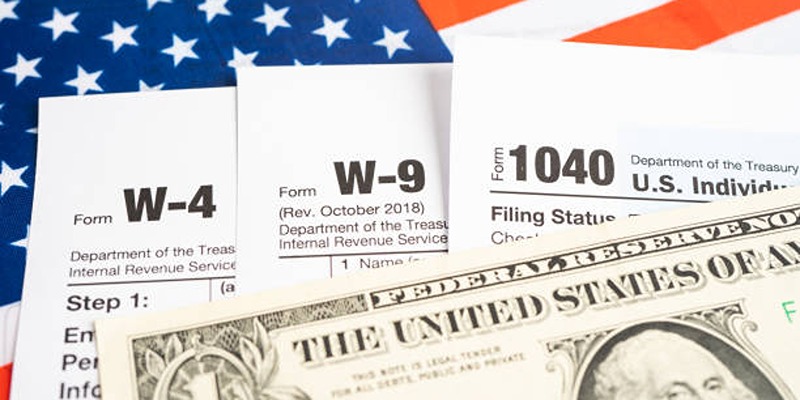When planning a move, it's important to remember that accidents can happen, and things sometimes go differently. That's why you should seriously consider purchasing moving insurance—it provides peace of mind if something goes wrong during the relocation process.
Not only will it cover any property damaged while in transit, but it could also pay for extra costs associated with transporting your belongings safely from one location to another.
In this blog post, we'll look at what kinds of protection moving insurance provides and how you can find the right policy for your relocation needs. Learn why buying insurance for your upcoming move is such a good idea!
What is the cost of moving insurance

The cost of moving insurance can vary depending on several factors, including the type of insurance coverage, the value of the items being moved, the distance of the move, the moving company chosen, and any additional services or coverage options.
Here are some common types of moving insurance and factors that can influence their costs:
Released Value Protection
This is the most fundamental coverage that moving firms often offer as a default. It provides only rudimentary security, usually determined by the weight of the objects being carried rather than their real value. A moving company's basic charge or entire moving package frequently includes the expense of this coverage.
Full Value Protection
This type of coverage provides more comprehensive protection for your belongings. If any item is lost, damaged, or destroyed during the move, the moving company will be liable to repair, replace, or compensate you for the item's current market value.
The cost for full value protection is generally based on the declared value of the items being moved and is typically calculated as a percentage of that value.
Third-Party Insurance
Some individuals opt to purchase additional moving insurance from third-party insurance providers to supplement the coverage provided by the moving company. The cost of third-party insurance can vary based on the policy's coverage limits, deductibles, and specific terms and conditions.
It is important to note that the moving insurance cost is often separate from the moving costs the moving company charges. The moving company may offer different coverage options with varying costs, and it's advisable to inquire about the insurance options and associated fees during the selection process.
To get an accurate cost estimate for moving insurance, it's recommended to contact moving companies or insurance providers directly. Please provide them with the details of your move, including the type and value of the items being moved, the distance of the move, and any additional services required.
They can then provide specific pricing information based on your unique circumstances and the coverage options you choose.
What protection do moving companies offer

Moving companies typically offer two main types of protection or liability options to cover your belongings during the move:
Released Value Protection
Released Value Protection is the most basic and often the default coverage provided by moving companies at no additional charge. Under this option, the moving company assumes liability for your belongings based on their weight rather than their actual value.
The liability is typically set at a predetermined amount per pound, such as 60 cents per pound per item. However, it's important to note that this coverage is minimal, and in case of damage or loss, the compensation you would receive may not adequately reflect the value of your items.
Full Value Protection
Full Value Protection provides more comprehensive coverage for your belongings during the move. It offers greater protection than Released Value Protection but is typically an optional coverage for which you may need to pay an additional fee.
With Full Value Protection, the moving company assumes liability for your items' repair, replacement, or reimbursement at their current market value. If any item is lost, damaged, or destroyed during the move, the moving company will be responsible for compensating you accordingly.
It's important to carefully review the terms and limitations of the moving company's protection options. Pay attention to any exclusions, deductibles, or specific requirements for filing a claim.
Additionally, it's advisable to document the condition of your belongings before the move by creating an inventory and taking photos, as this can be helpful if you need to file a claim later.
Aside from these liability options, moving companies may offer additional services or protection plans, such as third-party insurance coverage, which you can opt for to supplement the basic protections provided by the moving company.
What if you move all the stuff yourself
If you decide to move all your belongings yourself without hiring a professional moving company, the protection and coverage options will differ.
Here are some factors to consider:
Personal Insurance
Your homeowners or renters insurance policy may provide some coverage for your belongings during a move. Review your policy or contact your insurance provider to understand if and how your insurance covers your belongings while in transit or during a self-move.
Remember that coverage limits, deductibles, and specific terms may apply.
Vehicle Insurance
Suppose you use your vehicle or rent a truck to transport your belongings. In that case, your auto insurance policy may cover any damage or loss during the move. However, it's important to check your policy or contact your insurance provider to understand the extent of coverage and any applicable limitations.
Self-Assumed Risk
When you move your belongings yourself, you generally assume the risk and responsibility for any damage, loss, or theft that may occur during the move. Without professional movers or their associated liability coverage, you must rely on your care and precautions to protect your belongings.
Packing and Securing
Properly packing and securing your belongings is crucial to minimize the risk of damage during the move. Ensure that fragile items are well-protected, heavy items are secured to prevent shifting, and all boxes are labeled and organized. Taking extra care and using appropriate packing materials can help reduce the chances of damage.
While moving your belongings yourself can save costs, it's important to understand the potential risks involved and take appropriate precautions. Consider factors such as the value and fragility of your belongings, the distance of the move, and the transportation conditions to assess the level of protection you may need.
FAQs
Why should you purchase insurance?
Moving insurance is designed to provide financial protection for your belongings during relocation. It can help cover losses due to damage and theft while items are in transit.
What is the value of insurance?
The value of your policy will depend on the type and amount of coverage you choose. Generally, basic policies provide coverage up to a certain dollar amount for each item, while more comprehensive policies may cover all of your items up to a predetermined total limit or even offer replacement cost coverage.
How can insurance protect you from financial loss?
Insurance helps to protect you from financial loss due to damaged or lost items during the moving process. In the event of an accident, theft, or other covered loss, insurance can reimburse replacement costs so you don't have to pay out of pocket.
Conclusion
After examining the risks associated with a move and the kind of protection that is moving insurance offers, it should be clear why everyone relocating should purchase a policy. Moving insurance provides invaluable peace of mind should something unexpected happen.
So if you're planning to move, consider purchasing moving insurance; it's one of the best decisions you can make for yourself and your belongings. Take care of yourself, protect what's important, and consider purchasing moving insurance today!




